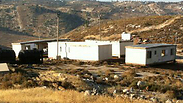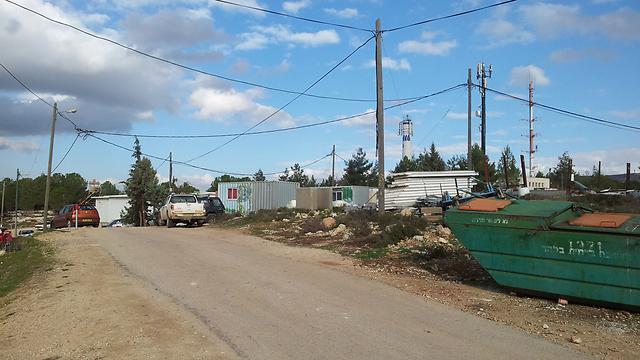
PLO slams Israel's move to annex 4,000 dunam in West Bank
After Israel decided to recognize 4,000 dunam in Gush Etzion as state land, Palestinians say move is indicative of 'Israel's desire to wipe out the Palestinian presence and impose a one-state solution'
The Palestinian leadership condemned Sunday Israel's decision to recognize 4,000 dunam in Gush Etzion as state land in what some claim is retribution for the murder of three Israeli teens in June.
The PLO issued a statement saying that "today's decision clearly represents Israel's desire to wipe out the Palestinian presence and impose a one-state solution."
Explaining the decision, the Coordination of Government Activities in the Territories said there was no Palestinian claim on the area in question - Gva'ot - but those against the decision could file their objections within 45 days.
However the Palestinians said the decision was continuation of Israel's past policies. "Under the cover the last round of aggressions in Gaza, Israel continues its campaign of violence, settlement expansion and ongoing destruction of homes. From the middle of June some 32 Palestinians have been killed in the West Bank and East Jerusalem while tenders for 1472 settlements units were put forward.
"This is proof that the Israeli leadership is not a partner for peace. Israel must be punished with economic sanctions for repeatedly breaking international law," the PLO said in a damning statement.
Palestinian President Mahmoud Abbas' office urged Israel to backtrack from the move.
The deputy director of the Yesha Council of Settlers Yigal Dilmoni called the decision on Gva'ot "an appropriate Zionist response to the terror attacks on Israel."
He also called on the government to go further in developing settlements in the West Bank.
"The Defense Ministry needs to authorize the construction of hundreds of housing units in the territory and the building of additional neighborhoods throughout Judea and Samaria."
Peace Now director Yariv Oppenheimer, on the other hand, said the move was "a knife to the back of Abbas and it is sending a message to the Palestinian people that the government of Israel is negotiating with Hamas, while at the same time destroying any chance to reach a true accord with the moderate people."
Expansion
Gva'ot has not been officially recognized by Israel since it was built without zoning permits, so in order to start the process of declaring it a recognized community, the state had to delineate the boundaries of the community.
Most of the territories in the West Bank are divided to three categories: Private land (whose ownership is registered with the state), state land (areas that haven't been worked and are not listed in the with the Israel Land Authority that are considered state-owned), and lands under survey or "admot seker" (land that has reverted to the state due to lack of use for 10 years and lack of registered ownership, but which has yet to be declared as such).
These surveys, which in many cases take years to carry out, aim to determine the ownership of the land based on several criteria. In most cases, the declaration of status is delayed because the government has yet to make the decision on the issue.
Gva'ot is located in the heart of Gush Eztion, near the hill on which the men of the Haganah Convoy of 35 were killed during Israel's War of Independence in 1948. In order to create territorial continuity from the communities to the Green Line, the government decided in 1982 to build a Nahal settlement in Gva'ot.
In June of 2014, the three Israeli teenagers - Gil-Ad Shaer, Naftali Frenkel and Eyal Yifrach - were kidnapped and murdered in that area.
"The announcement paves the way to establishing the new city of Gva'ot," the head of the Gush Etzion Regional Council, Davidi Perl, said. "The murderers of the three teens wanted to plant fear in our hearts and disrupt our daily lives, and our answer is strengthening the settlements and constructing both inside the main blocs and outside of them."
Itay Blumental and Moran Azulay contributed to this report.











